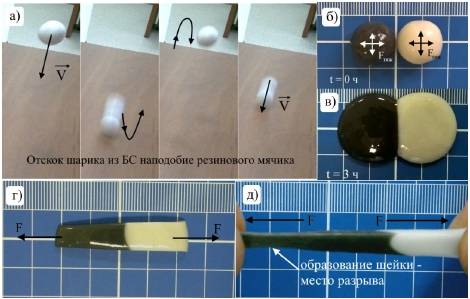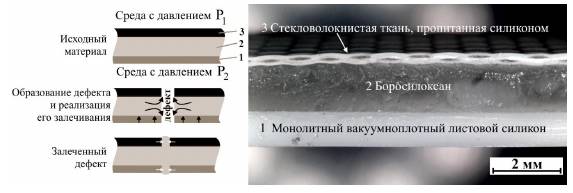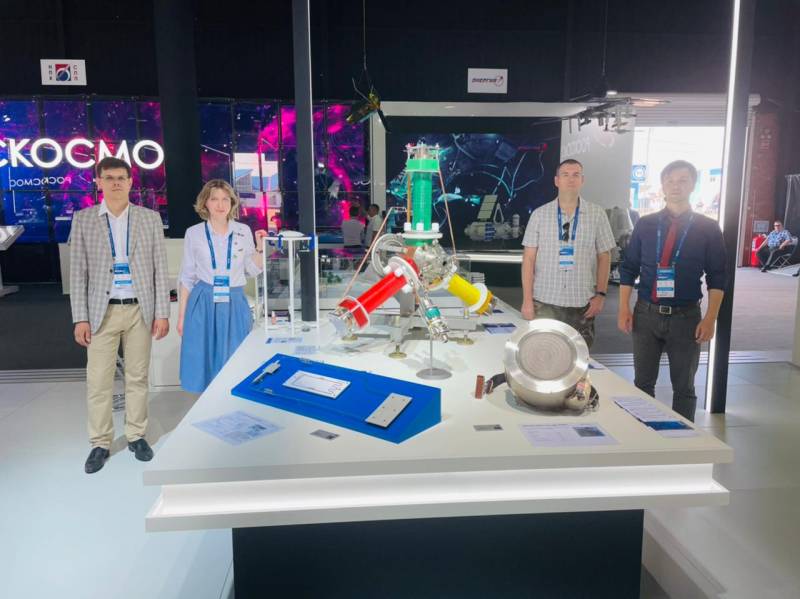For space and not only. SSC "Keldysh Center" is completing research on self-healing materials
One of the promising areas in the field of materials science is the creation of the so-called. self-healing materials. These are special composites capable of independently repairing damaged areas while maintaining the main mechanical characteristics. Self-healing composites are being developed abroad and in our country. The main domestic projects in this direction are being created at the State Scientific Center “Keldysh Center” from Roscosmos.
Promising direction
The Keldysh Center, together with the Russian Foundation for Basic Research and a number of other scientific organizations, has been working on the topic of self-healing materials over the past few years. The main ideas and concepts have already been found, as well as studies of specific compounds and composites based on them have been carried out. The successes achieved have been reported in peer-reviewed journals many times. In addition, samples of new materials are shown at exhibitions.
The current version of the promising composite was demonstrated at the past exhibitions MAKS-2021 and Army-2021. He has already passed laboratory tests, during which he confirmed the calculated ability to recover from punctures and cuts. On prototypes, damage up to several millimeters in size was quickly and efficiently "tightened".
According to the organization-developer, research work on the promising project will be completed in December this year. Further plans have not yet been disclosed. Perhaps, the "Keldysh Center" and other enterprises will start working out the issues of introducing the new composite into practice.
The self-healing composite currently on display is a soft multilayer material suitable for a variety of products. First of all, we are talking about inflatable elements for various purposes. These can be habitable compartments with an air atmosphere, tanks for liquids, etc.
New material
The promising composite is based on borosiloxane and its compounds. The compounds used in the composite have the properties of a non-Newtonian fluid, due to which the necessary functions are provided - the ability to withstand static loads and recover from damage.

Borosiloxane can be used to create various composites that generally have a similar architecture. A three-layer system is proposed. External and internal can be made of different materials, giving the required mechanical characteristics. In particular, it can be cross-linked borosiloxane - a substance with the use of fibers of one type or another. Silicone and silicone-impregnated fiberglass were also tested.
Between the outer layers is placed a relatively thick matrix layer of viscous borosiloxane in pure form or with fiber filling. It is he who uses all the properties of a non-Newtonian fluid and is responsible for the so-called. mass transfer to the damaged area, leading to the "healing" of the hole. Depending on the composition of the composite, other layers may have similar properties. Moreover, all layers have their own functions, both mechanical and in the process of tightening damage.
The principle of the self-healing composite is quite simple. An inflatable or other product designed to work with an internal atmosphere with a certain pressure is made of such material. The latter creates tension at which the inner layer of the composite has the properties of an elastic substance. This behavior persists under impact or other load.
If one or more layers are damaged, the tension is reduced, as a result of which borosiloxane begins to exhibit the properties of a viscous liquid. It seeks to leak into the hole and, as a result, literally closes it up. Due to this, the release of the atmosphere from the product stops, and loads reappear, making the composite elastic and resistant to impact.
The rate of damage recovery depends on the architecture of the composite, on the composition of the borosiloxane matrix, on the nature of the hole, etc. Small dents and through damage are repaired in a few seconds. Larger breaks take up to several minutes. The maximum possible size of "healed" damage is determined by the thickness of the inner layer and, accordingly, the amount of mass available for transfer. However, so far we are talking only about millimeters.
For space and beyond
The Keldysh Center is the headquarters of Roscosmos in a number of regions. In particular, it is responsible for the development of the direction "Functional materials for space technology". This indicates that new self-healing materials are being created primarily for the rocket and space industry.

The proposed composites have several important features. In addition to their ability to recover, they are lightweight and flexible. All this allows them to be used as structural materials for some products and objects, giving a certain level of protection. In addition, they can be used together with other materials as additional protection against mechanical damage.
For example, a self-healing composite can be used to protect a spacecraft from debris or micrometeorites. Such material will absorb the impacts of small objects and extinguish their energy, preventing them from damaging the main components of the ship. In addition, the composite will be able to seal the holes, which will extend the life of the entire system.
Also, new composites can find application in next generation spacesuits. In this case, it is possible to create spacesuits both for work in orbit and for the lunar program. In both cases, the properties of the new materials will be beneficial and will improve the performance of the suits.
In the distant future, self-healing materials can be used in the construction of permanent structures, such as stations on the moon. A composite dome of the required dimensions will be lighter than any other structure, which will simplify its delivery and installation. Besides, with the help of borosiloxane, the problem of minor repairs and leaks due to "attacks" of micrometeorites will be solved.
Naturally, recoverable composites can be used not only in space, but also on Earth. They can be used to make containers for various purposes, it is possible to use them in the construction of equipment or structures, etc. In general, it all comes down to the necessity and feasibility of using such materials in specific projects.
Experiences and practice
However, while the promising project of the "Keldysh Center" and related organizations is only at the stage of research work. They will be completed at the end of the year, and then the main results and real prospects of the direction will be clear. Then it will be possible to work out the issues of introducing new materials into real projects.
In theory, self-healing materials can be used in a wide variety of fields and have a great future. However, until now, their introduction has been impossible due to the lack of well-developed and "technically mature" formulations and formulations. The solution to this problem is approaching the desired end - and soon the new technology will be in the hands of designers of rocket and space technology.

Information